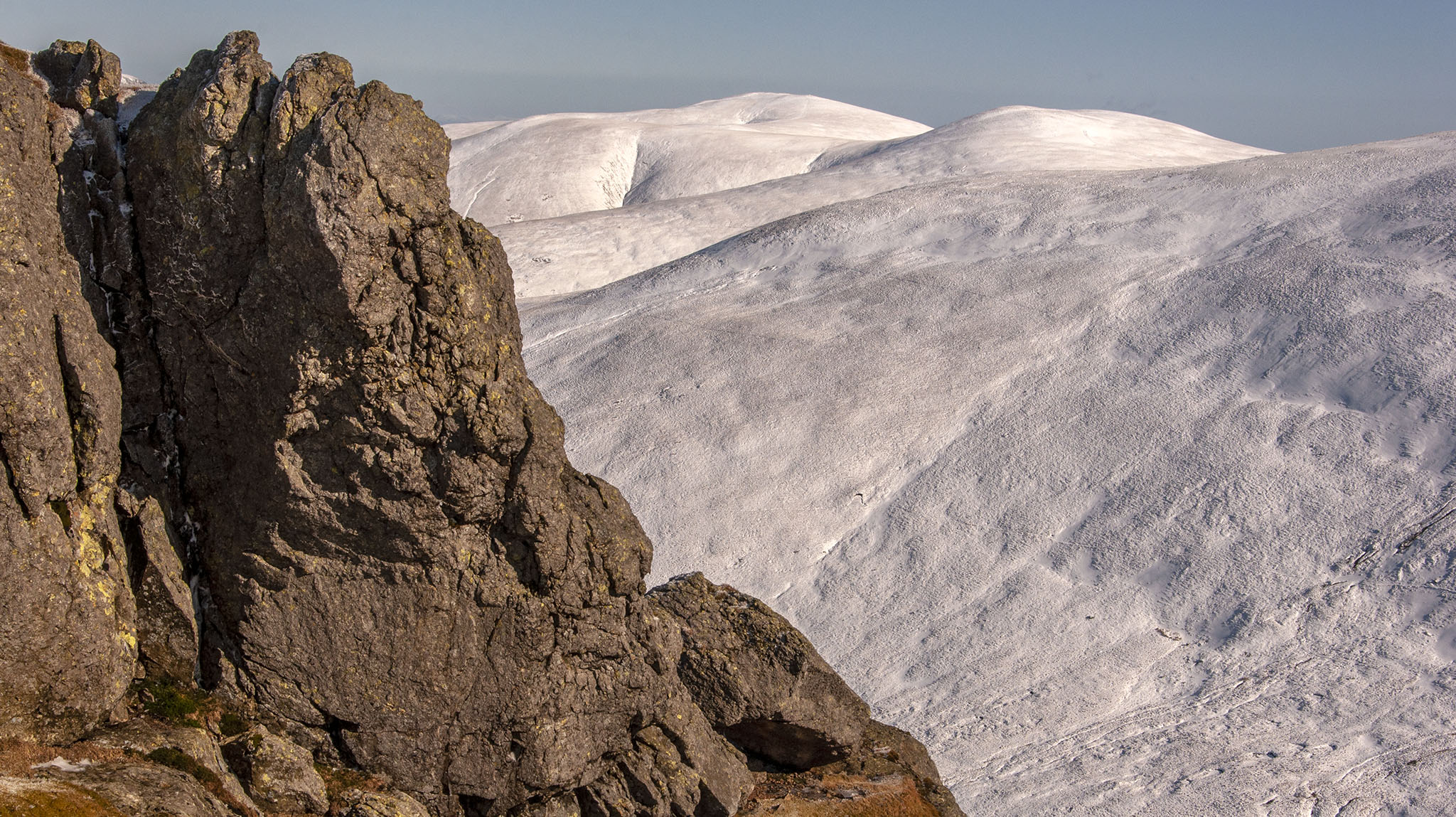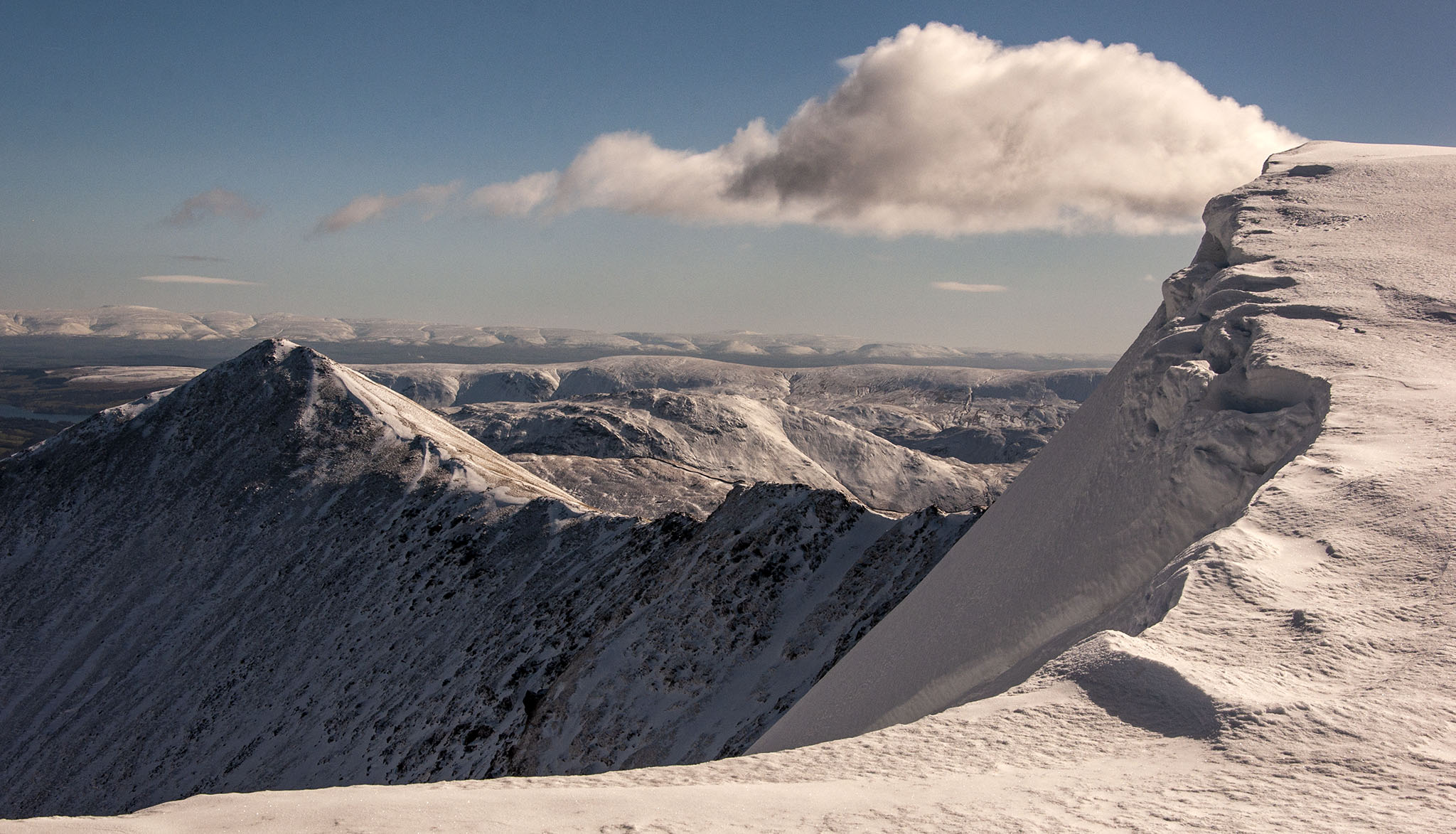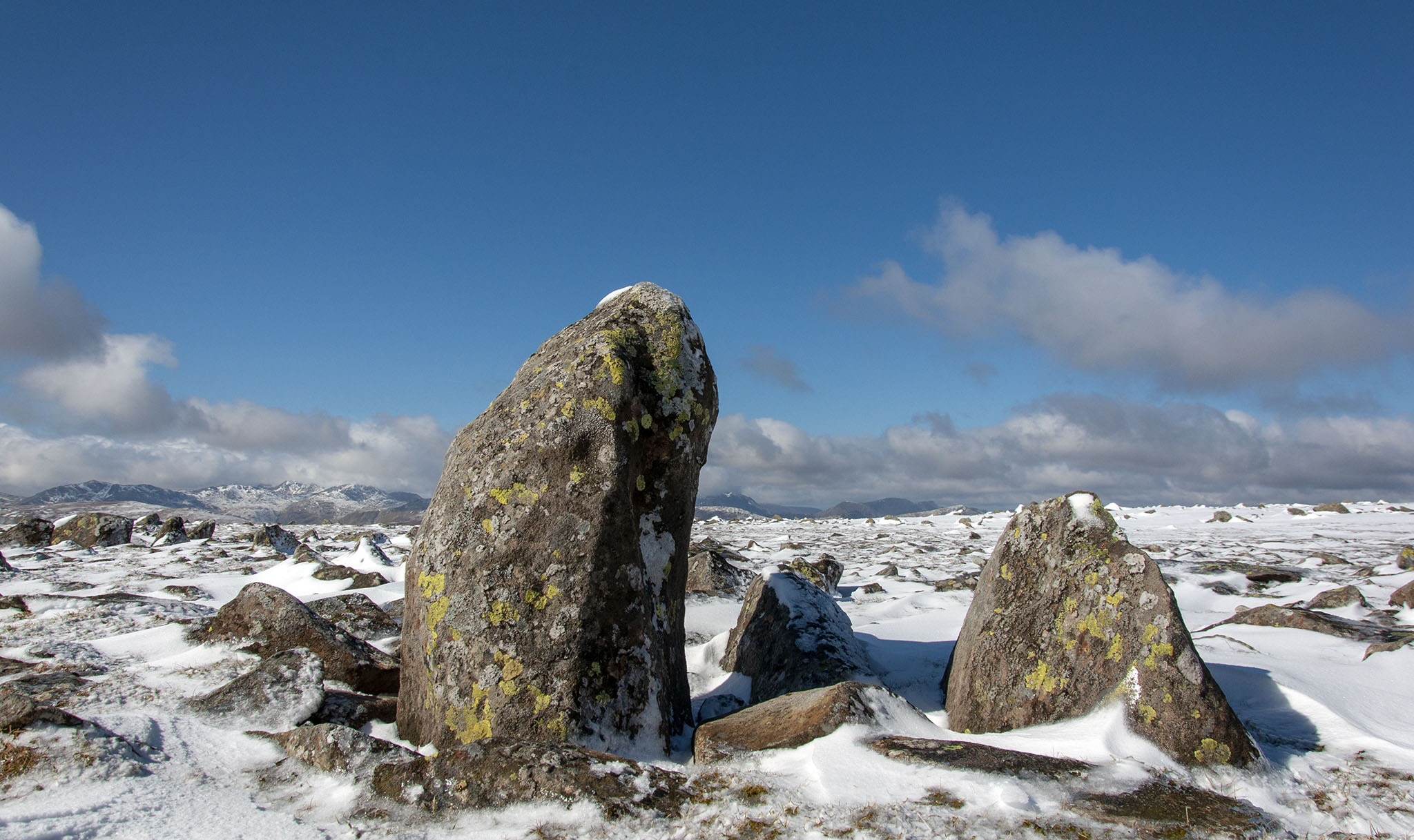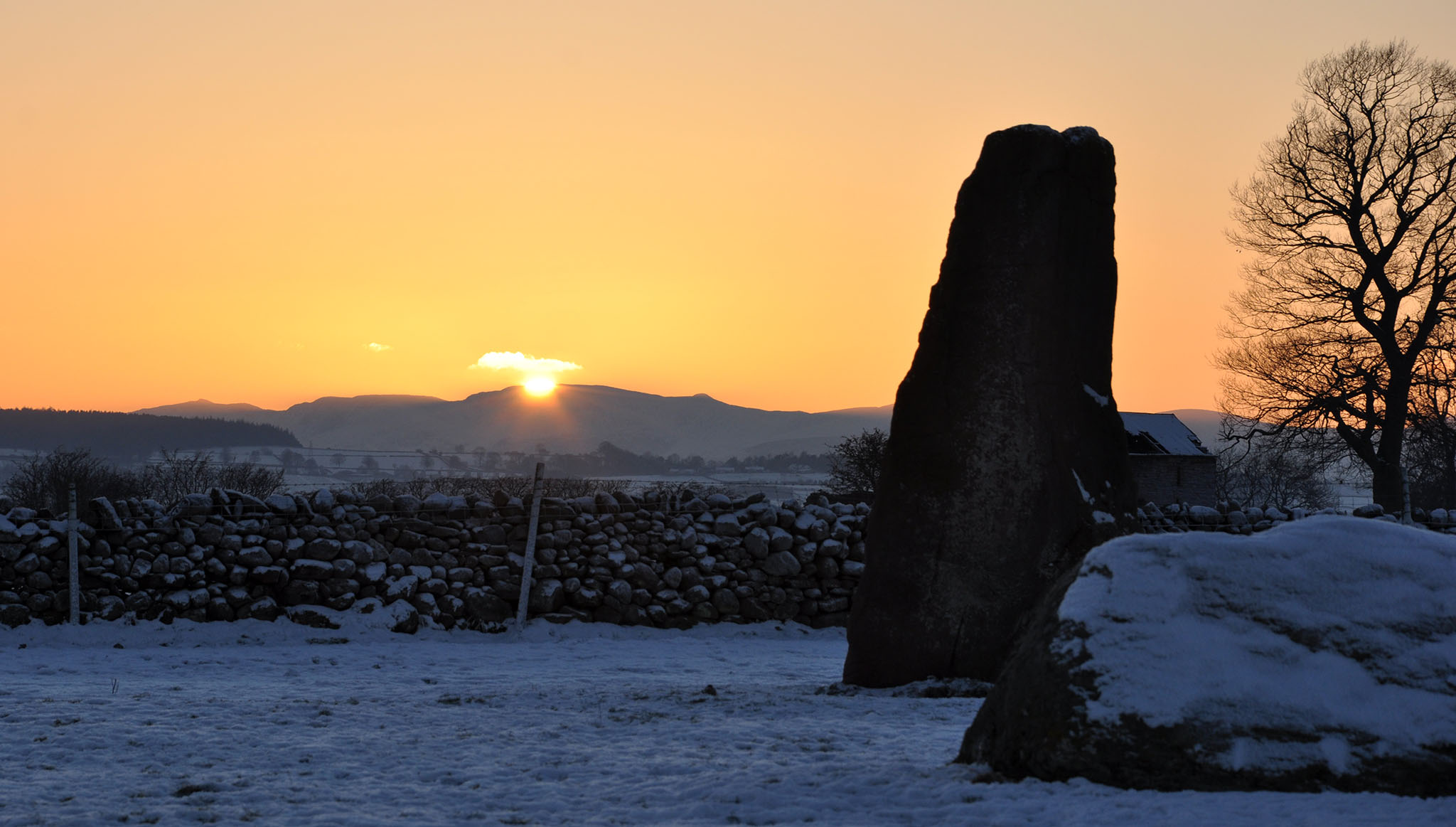The standing stones of Nethermost Pike
The valleys and the mountains are in different seasons. Spring is arriving on lower ground, but overnight snow had plunged the fells into winter conditions. Compacted snow formed cornices around the fringes of the Helvellyn plateau, and rocks and grass were encrusted with sparkling ice crystals.
Above: Contrasting colours and textures on the walk to Helvellyn (Photo: Aaron Watson, 2018)
Above: Patterns in wind blown snow, not far from Helvellyn Lower Man (Photo: Aaron Watson, 2018)
Above: Looking towards Swirral Edge and Catstye Cam (Photo: Aaron Watson, 2018)
Above: Ullswater, with the distant Pennines beyond (Photo: Aaron Watson, 2018)
Above: Precipitous ice and the summit trig point on Helvellyn (Photo: Aaron Watson, 2018)
It was over twenty years ago that I first noticed a group of rocky features upon the plateau of Nethermost Pike. I mentioned them in my doctoral thesis because they resembled standing stones. Most intriguing of all, geologists have identified these features to be entirely the product of the long-term action of ice. They are one example of a variety of patterned rocky formations which can be found across the high ground of the Lake District, as well as further afield.
Above: Standing stones on Nethermost Pike (Photo: Aaron Watson, 2018)
In the morning sunlight, the natural standing stones of Nethermost Pike contrasted against the blue sky and vivid white snow. On one of the most distinctive monoliths the raking light revealed a feature which I had not seen before - a small circular hollow resembling a cup mark. Like the stone itself this ‘cup mark’ is very likely to be natural, but this is unlikely to have been how it would been understood by Neolithic people visiting this place. For them, landscape features which resembled their own architectural and symbolic expressions may have been auspicious.
Above: A hollow on one of the stones resembles a cup mark (Photo: Aaron Watson, 2018)
The standing stones of Nethermost Pike may have lent Neolithic and Bronze Age significance to a ridge which is an unbroken block of high ground extending for over 18km (12 miles). It divides the Cumbrian mountains between the eastern fells and ranges of rugged and rocky peaks in the west. When viewed from Neolithic stone quarries in the central fells, the ridge punctuated by the high points of Helvellyn and Fairfield dominates the eastern horizon. The southern end of this ridge is marked by a group of cup and ring marked rocks. To the north a wide basin is the focus for Castlerigg stone circle. Knapped stones near to the summit of Fairfield show that this high ground was known and visited. Similar rocks outcrop on Helvellyn.
When viewed from the stone circle of Long Meg and Her Daughters, far to the east in the Vale of Eden, sun sets spectacularly behind the Lake District mountains at the winter solstice. It may be no coincidence that, when viewed from this monument, the point at which the sun disappears is non other than Helvellyn.
Above: The midwinter sun setting behind Helvellyn, viewed from inside the stone circle of Long Meg and Her Daughters (Photo: Aaron Watson, 2010)










